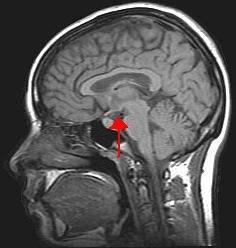Part 1: The Pathology of Morbid Obesity from an Experimental Research Perspective [It’s far more complicated than anyone initially thought.]
Obesity is a disease that doesn’t need an introduction.

However, like most diseases the underlying cause is invisible to the unaided eye or even a microscope because it exists primarily on the level of biochemistry. Just like how a bruise isn’t solely the result of a traumatic injury, but an intricate cascade of signaling molecules, enzymes, macrophage infiltration, platelet coagulation, and osmotic forces, obesity also has biochemical underpinnings.
Not everything is known about the pathology of obesity today. For many decades experimental research into the causes of obesity and effective treatment have been discouraged by physicians who believed they could understand the condition based on intuition and their own limited and biased experiences alone, or they were paid off.
While the American Medical Association often prefers industry funded opinions over hard facts, we in the scientific communities insist on Research Based Medicine.
What We Know About Obesity from Experimental Research
The Core of the Problem

What seems to be the consensus among lead experimental researchers today is that the core of morbid obesity is a defect in the arcuate nucleus, which is an area of the brain that regulates appetite, calorie expenditure, body composition, and blood sugar, among other things. [1]
The defect can be that this part of the brain is physically damaged, missing, or it can be biochemically non-functional with regards to leptin. This is called hypothalamic obesity. [2]
The Cause
Unfortunately for the world, this is where it gets very complicated and in medicine we often need to find the cause to find the cure. Many things can cause a loss of leptin receptors and even the cells that have them in the hypothalamus. The hypothalamus and/or its leptin receptors can be reduced or made non-functional from traumatic brain injury, chemical insults, genetic defect, and changes in gene expression. Periodically check or follow @redclover for more parts to this series because this is a BIG subject.
Notes:
[1] https://www.ncbi.nlm.nih.gov/pmc/articles/PMC2798145/
[2] http://www.eje-online.org/content/168/4/501.full.pdf
Obesity pictogram by Ana Felix

If you’d like to promote Science, Technology, Engineering, and Mathematics (STEM) on Steemit or just fight the blog spam by up voting quality content, show your support.
Many of my posts are part of a larger series of articles that cover a given subject in more detail. You can find all my related articles in the blog section at @redclover.
In addition to producing articles, I also try to elevate quality content. If you feel like we have the same standards, consider delegating Steem Power.
Great post I gave you a follow!
Thanks. I'm hoping to cause a small science renaissance on steemit!
I ll definately be following you.
Interesting stuff since the hypothalamus is influenced by the use of essential oils too - i will dive deeper into this, thank youfor the links
It looks like you have an idea of where I'll be taking future posts.
Celestrol and the ERS inhibitors. :)
Yep i was thiking that way too.
Pity you can not tag me hereo steem - i will look for that following post!
Good thoughts